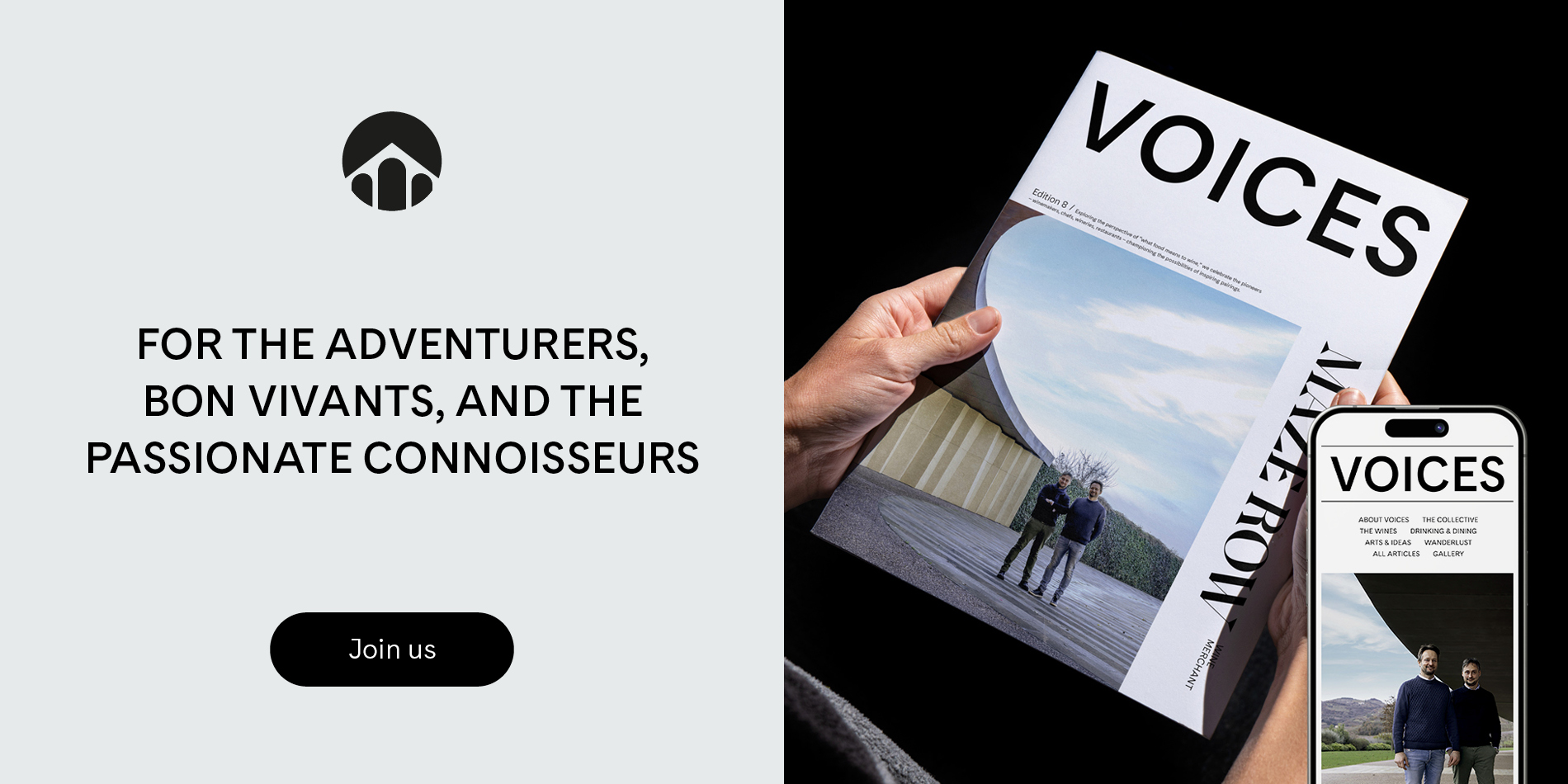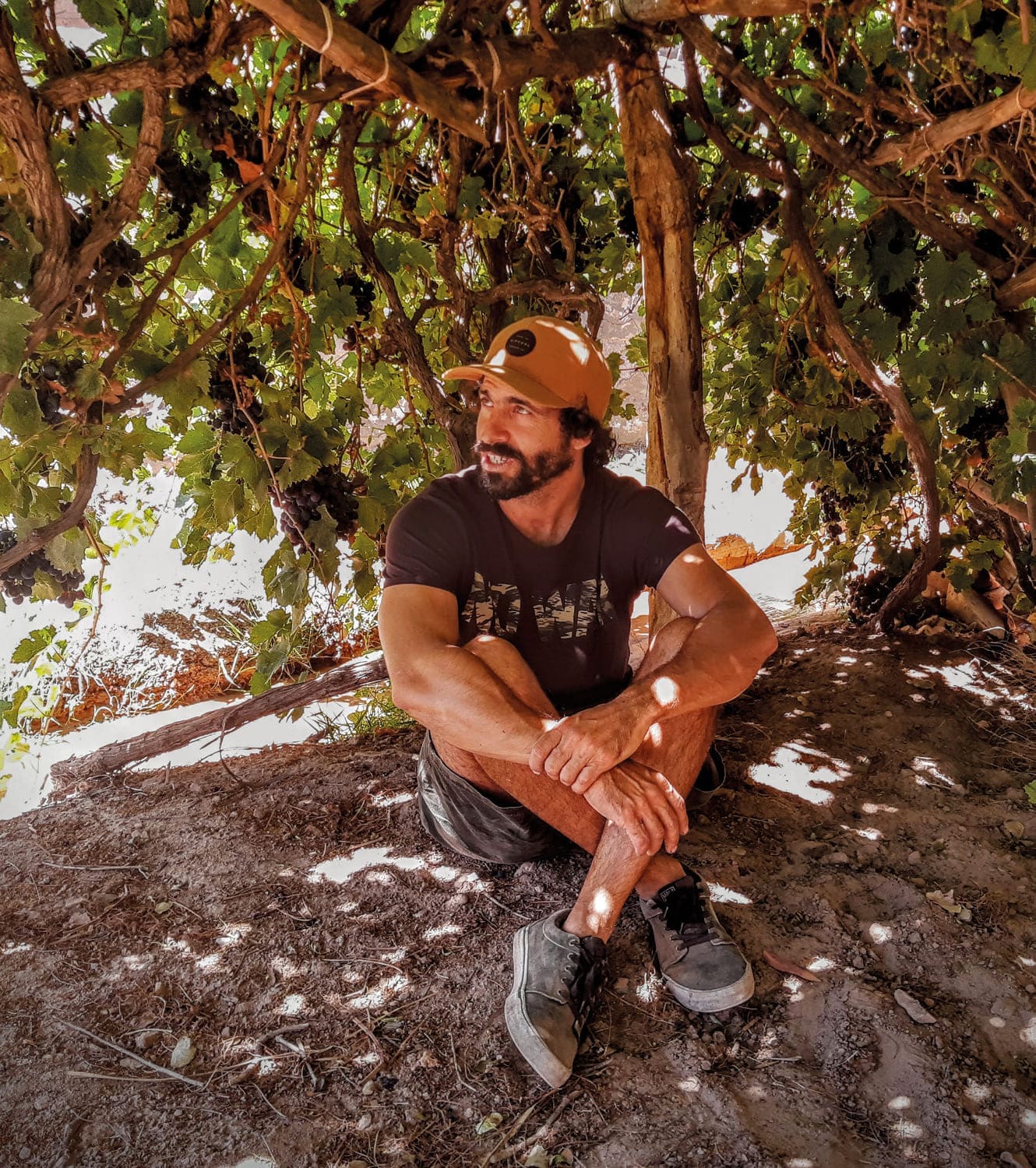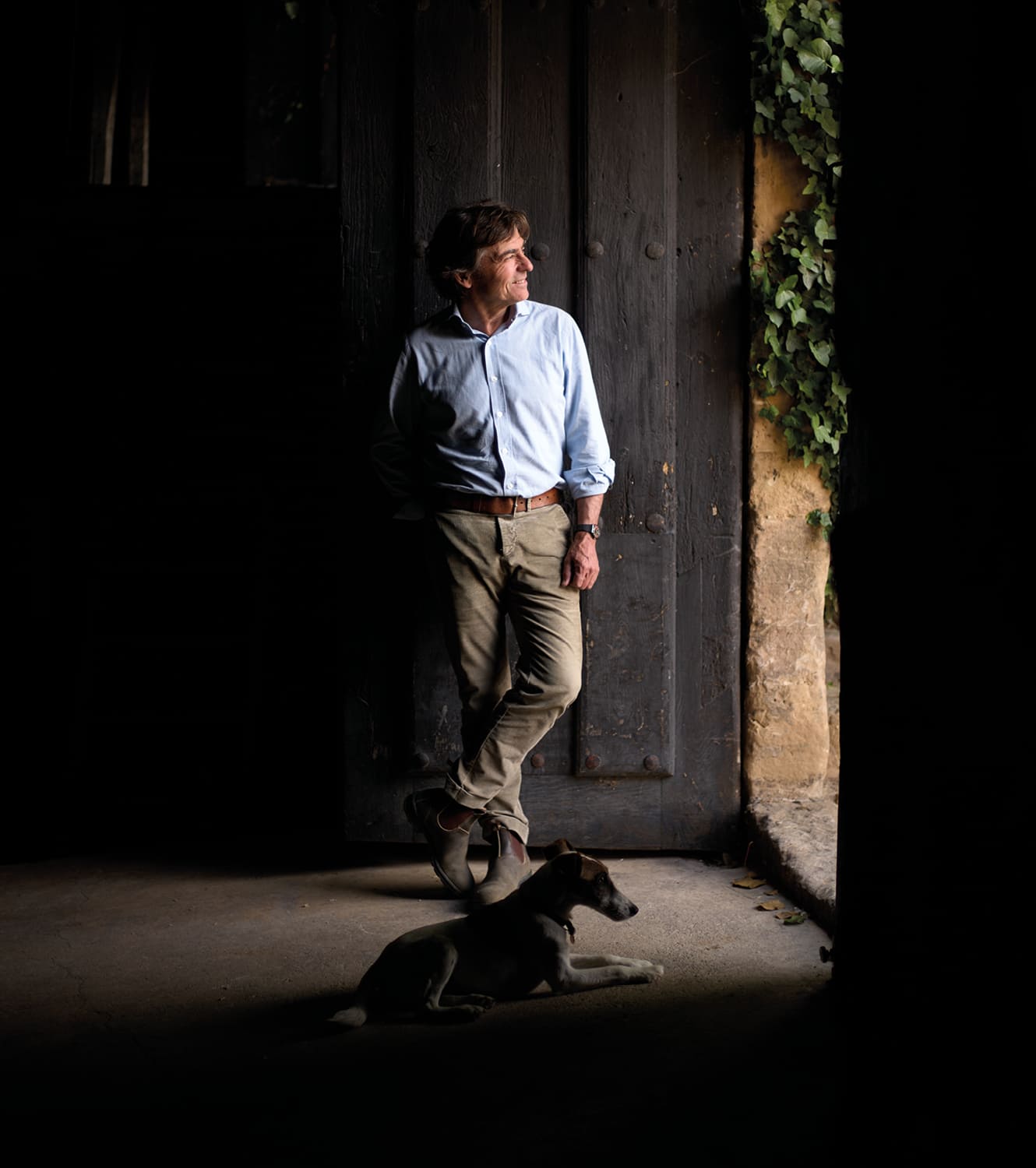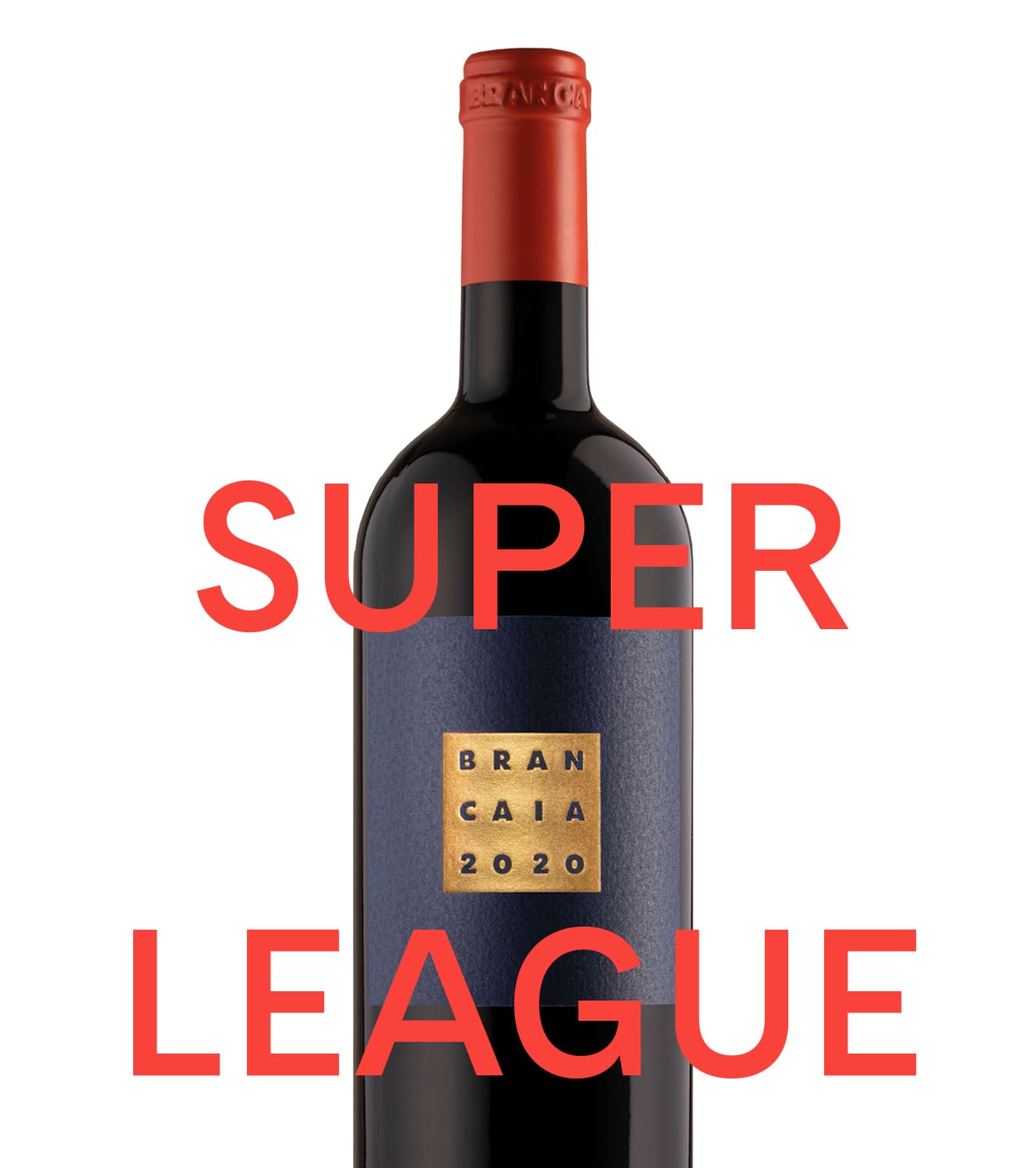
THE STEEPER THE BETTER
Some of Europe’s steepest and most labor-intensive vineyards produce wine as spectacular as the scenery, writes Will Hersey
Stand on the vertiginous hills above the remote Valtellina valley, and you’d be forgiven for thinking you’re on a potentially hazardous hiking trip, rather than paying a visit to one of Northern Italy’s lesser-known wine regions.
Snow-capped Alpine peaks loom in full view to the north. The occasional cactus can be spotted sprouting through the rocks at your feet. In the valley below, which stretches 80 km across from Lake Como in the west, as many as 20,000 terraces for growing grapes have been cut into the mountainside, ensuring every square meter of land is in use.
Some say these are the steepest terraced vineyards in Europe, the highest at an elevation pushing 1,000 meters. All face south, ideally with a western aspect, to maximize exposure to the Italian sun, which in summer can be brutal. Harvesting is not for the faint-hearted. Indeed, every facet of making wine here requires exertion – physical and mental. It’s no surprise to hear the word “heroic” so often used to describe winemaking in Valtellina.
“It’s not like any other area, you really have to sweat to produce wine here,” says Luca Dusi, co-owner of Italian wine importer, shop and bar Passione Vino in London, who has been championing the region since a new generation of winemakers picked up the mantle over the last decade. “It’s not an investment, it’s a commitment, a life-changing lifestyle.”
The sheer exposure of these vines to whatever nature throws their way provides yet another challenge. “The various micro changes are felt immediately,” says Dusi. “It’s as if the winemaker is playing chess with the vintage against the elements.”
The principal grape here is the high-maintenance Nebbiolo, known locally as Chiavennasca. Dusi calls it the “moodiest” grape variety in Italy, which, given it has more indigenous grape varieties than any other country, is saying something. It’s perhaps Italy’s most noble grape, famous for the Barolos of Piedmont, 350 km south.
Nebbiolo in Valtellina might well be older than Barolo. Some of the tiny terraces that criss-cross the mountain side are over a thousand years old and winemaking can be traced back to the Romans. In many ways, the inability to mechanize here means the winemakers’ approach remains intrinsically traditional. Dusi calls it artisan winemaking.
On average in Italian vineyards, labor constitutes 350 to 450 hours per hectare every year. In Valtellina that number jumps towards 1,000. It therefore takes a certain type of winemaker to commit to such a challenge. Where Barolo has 1,200 producers, Valtellina has fewer than 50, most of them small.
“Once you get there, you realize it’s like a mountain community, they’re all really healthy, really hard-working and genuine, super crazy because there’s so much oxygen in the air,” says Dusi. “This new generation sticks to each other and helps each other unlike other areas. It’s like a movement.”
One great example is Barbacàn, considered to be at the forefront of a new wave of Italian natural winemaking. Here the Sega brothers, Matteo and Luca, see themselves as farmers first, or in their own words, “grape shepherds.” Their unique wine label design is inspired by neolithic cave paintings found nearby, and the team has taken to TikTok to showcase the work they do, which frequently includes choreographed dancing in the vines to the sound of Beyoncé and the Bee Gees.
Marco Fay of the Sandro Fay vineyard is another of its leading lights, also noted for a natural approach that is reflected in the glass. “The style of Valtellina wines is so in tune with what many 21st-century wine drinkers seek: fresh, pure, expressive and mineral,” says Dusi.

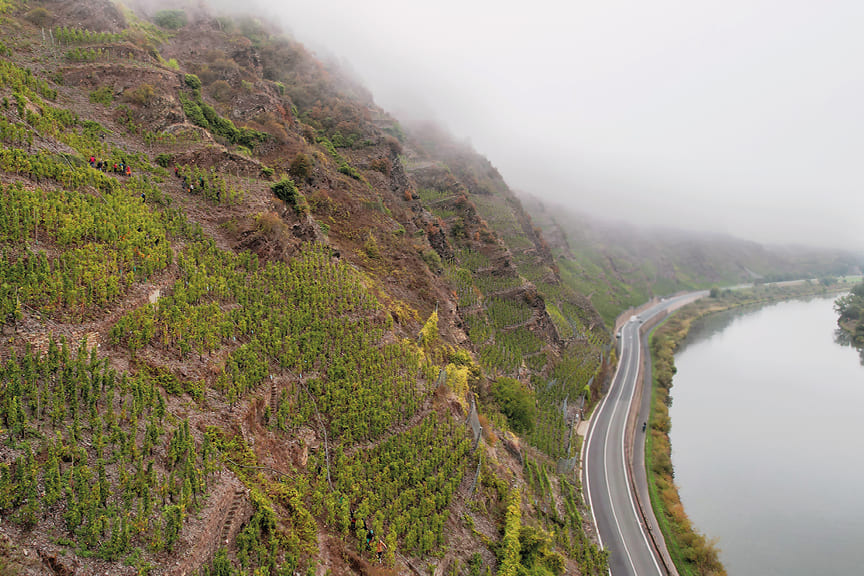
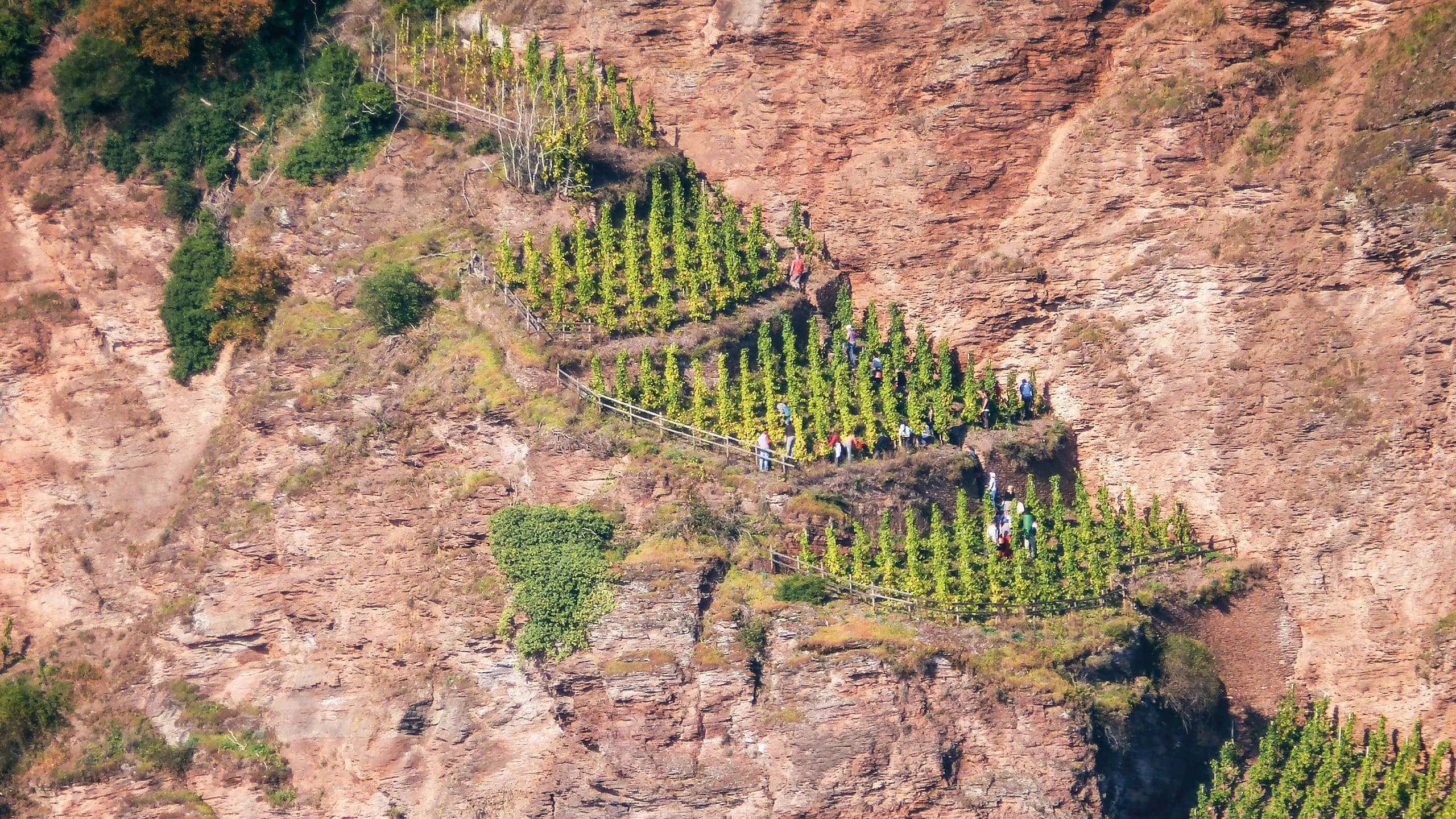
Vineyard work at Barbacàn, the Envínate founding team
CHOICE MOSEL
While Valtellina remains something of a secret, the Mosel region of southern Germany, a 10-hour drive north across the Alps, is well-known for producing some of the best Riesling wines in the world. Historically, this is as far north in Europe as wine regions have stretched, though climate change is shifting that map up to the UK and even southern Sweden.
It’s amongst the almost picturesque villages and hills of the Middle Mosel that Weingut Dr. Loosen lays claim to owning the steepest un-terraced vineyard in the world. Owner and winemaker of the family estate since 1988, Ernst “Erni” Loosen is something of a Riesling rockstar, whose unstinting enthusiasm for the grape is perhaps the biggest factor in its 21st century global renaissance.
Many of the vines on the 200-year-old winery are steep enough to make downhill skiers take a second look. A more recent addition to his collection, however, a plot called Bremmer Calmont, is on another level – or slope – altogether.
“People in the New World say to me, ‘Look at my sleep slope’, and I say: ‘Are you kidding? This is a vacation for us,’” says Loosen, whose wine travels have taken him all over the world. “Nowhere else I have seen is close. For me, if it’s the steepest in Europe, it’s the steepest in the world.”
He claims that making wine at the Bremmer Calmont vineyard (which in latin translates to “hot mountain”) each year requires an astonishing 5,000 hours of labor per hectare. Machines don’t work on the steep slopes and its damp and misty location by the Mosel river requires picking to be selective, which is itself a painstaking process.
Pickers have three buckets. Healthy grapes go in the black bucket, grapes with medium botrytis (noble rot) into the red bucket, and those with full botrytis into the white bucket, which are used for sweet wine. It’s exhausting work. “They can pick for one day and then need a break of three weeks before they go again,” says Loosen. “I brought one customer through the vineyard on a footpath and after 100 meters he said ‘I’m turning back.’”
With high labor costs and a low yield, it begs the question, why go to all the trouble? “Here, we struggle to get ripeness compared with southern europe,” explains Loosen. “Just to get our grapes to 10 percent alcohol level for us is a success. And comes at a hang time of 150 days. So steepness is an essential part of the three microclimates to get the grapes ripe. Steeper slopes have more direct inclination to the sun so here we have always said: the steeper the better.”
The other conditions considered optimal in Mosel include a south-by-southwest aspect to ensure maximum exposure, and lower elevations on the hillside for warmth. The slate soil here is the big draw. In full sun the gray black stones get so hot you can barely touch them. In the cooler nights, the residual heat keeps the soil warm. And warm, dry soil means the drainage is so good that water goes straight through, even during the rainiest spells.
“Warm soil is also high in microorganism activity, producing nitrogen which is essential for good agriculture. And slate has a very high content of natural potassium, the most important natural fertilizer,” explainsLoosen. “Since Roman times until the 20th century, there was no fertilization here other than maybe
cow manure.”
Extreme conditions they may be, but conditions that suit a natural approach to winemaking. So much so that Loosen is now producing his dry white exactly as his great grandfather used to make it between 1890 and 1928, when new technology arrived.
“[Back then] they used to know so much more about what time does to winemaking because they had to wait,” says Loosen. “It will be a very special wine when it comes out.”
Harvesting is not for the faint-hearted, with every facet of making wine requiring exertion – physical and mental
BASIC INSTINCT
It’s a philosophy shared by one of Spain’s most exciting producers right now, a collective called Envínate, whose approach might be crudely summarized as “back to basics”.
There are echoes too of the Mosel landscape in the remote wine region of Ribeira Sacra where Envínate began and continue to operate. Vineyards carpet the side of the spectacular Sil river canyon, some only accessible by boat. This is wet and wild Galicia, in Spain’s north-eastern tip, where every journey on the twisty roads seems to take forever, and the Atlantic wind and spray are a lurking influence.
Envínate was formed by four friends – Laura Ramos, Jose Martínez, Roberto Santana, Alfonso Torrente – who met while studying oenology at the University of Miguel Hernández in Alicante, and whose goal from the start was to express the distinctive terroirs of Spain and its Atlantic coastline. Envínate began with a single plot here but now works with over 50 growers in Ribeira Sacra, volcanic Tenerife and Almansa using natural, low intervention and often traditional methods – no pesticides, no fertilizers, only native yeasts – and working hard to preserve the health of the vines which can be up to 100 years old.
Like Valtellina and Mosel, the slow and painstaking nature of making wine here means production is tiny but the grapes and the vineyard shine through. “They’ve got this kind of sensuous nature that’s more like a Pinot Noir,” says sommelier Ben McVeigh, co-founder of Peckham Cellars in London. A comparison frequently used with Valtellina too. “You can taste the minerals, the slate, the rock and I think a lot of that is down to the soft hands and soft touch in the winery. They coax out this super elegant side of the Mencia grape.”
Elegance, freshness, minerals. These are words you hear a lot with the wines from these three dramatic mountain regions. “The winemakers don’t think of anything else than to make the wine as clean and elegant as possible so you can feel the effort and the knowledge and the passion and the sweat that is poured into the production,” says Dusi.
An appreciation of backstory can add character to any vintage, and these wines produced from near-vertical vineyards have it in barrel-loads. Drinkers get the benefits, just without the rough hands and the sore back.

©Dr. Loosen ©Leigh-Ann Beverle, Envinate ©Estanis Nuñez, ©Barbacàn
We recommend
UNEARTHING THE PAST
To find out how some recent discoveries have revitalized South America’s wine world, Amanda Barnes delves deep into an old vine treasure trove at the end of the world
REBEL WITH A CAUSE
Winemaker extraordinaire Telmo Rodríguez has helped redefine Rioja with his unique terroir-focused village wines, as Nargess Bank discovers
GROUND CONTROL
Soil mapping is transforming winemakers’ knowledge of their land. Pedro Parra, whose work on the Brunello di Montalcino wines has led to the creation of the award-winning Argiano’s Vigna del Suolo 2018
SUPER LEAGUE
Is it time to drop the name Super Tuscan and focus on quality? Cynthia Chaplin explores the new landscape of Italy’s most famous and prolific wine region
